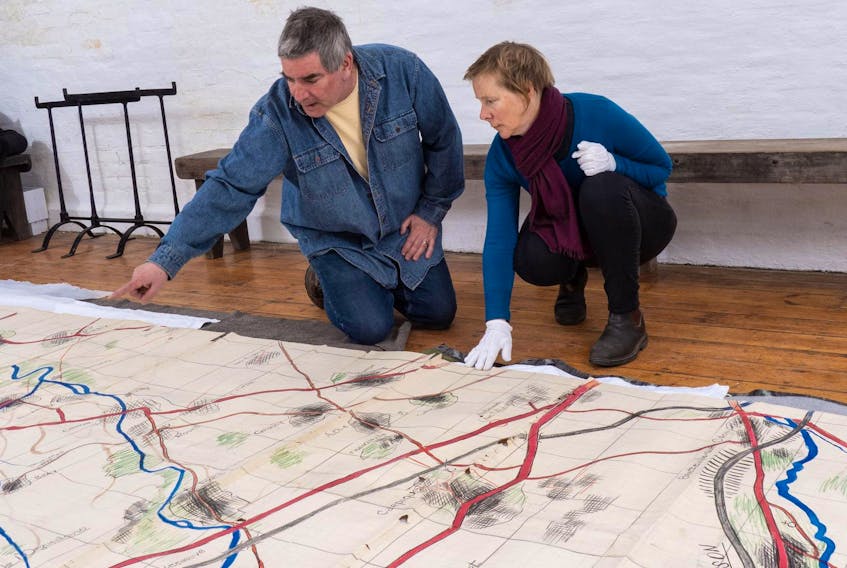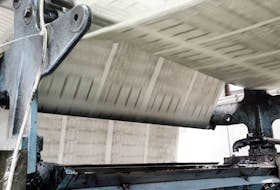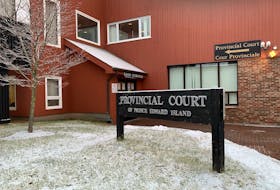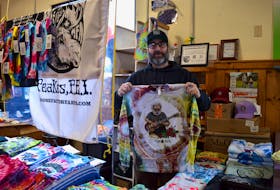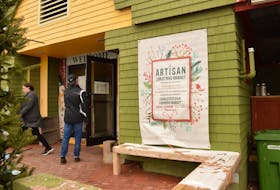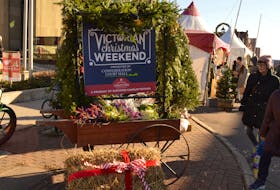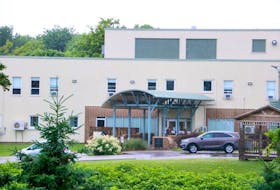Note: The Chronicle Herald and SaltWire Network begin a four-day series on Wednesday, commemorating the 75th anniversary of D-Day. Hundreds of soldiers from Atlantic Canada took part in the invasion and we tell some of their stories.
They know what it is, but when, where and who made it remains a mystery to military historians at the Army Museum Halifax Citadel.
The approximately 4.5-metre-long by two-metre-wide Second World War observation map, depicts the June 6, 1944, D-Day landing of the 3rd Canadian Infantry Division’s 9th brigade on Juno Beach in France.
Hand-painted with pencils, crayons and water colours, the grid-map outlines the brigade’s 12.8-kilometre-wide front and all the villages, roads and waterways in the path of its 30-kilometre march through the Normandy countryside to its objective, the town of Carpiquet and its airfield on the outskirts of the city of Caen.
“It’s a very specific thing,” Kevin Robins, the museum’s curator of military history, said of the map which focuses only on the role that the 9th Brigade, comprising the North Nova Scotia Highlanders (North Novas), played on the first day of the battle.
Given the nature of how the map was put together in sections and that there are no other markings on it, he speculated it could have been made during or after the war as part of an action report for officers to study and learn what may have gone right or wrong during the advance.
In summarizing the battle, Robins explained the Canadian division’s 7th and 8th brigades made the initial assault on Juno Beach and were followed later in the morning by the 9th Brigade, tasked with passing through their lines and heading to Carpiquet.
But, he said, the unit fell a few miles short and only made it to the village of Authie after running out of daylight and hearing the rumblings of a possible German counterattack. The attack by 12th Waffen-SS Panzer division commander Kurt Meyer came the following day and the Canadians, forced to leave their dead and wounded behind, fought an orderly withdrawal.
The Canadians regrouped and after a week of savage fighting were able to drive the Germans back to Authie. It took another month for them to finally reach their original objective of Carpiquet.
The map also shows the area near Authie where the Canadians found the body of Capt. Stephen Bird, son of noted Nova Scotian author Will Bird, who had written several books on his experiences during the First World War.
The campaign was the most costly in Canadian wartime history, Robins said. “You cannot underestimate the savagery of the fighting in Normandy.”
He noted the map has been in the museum’s collection since the late 1950s or early ’60s, but where it came from no one knows. It had been folded in a military fashion and came to light while the museum was in the midst of reorganizing its artifacts several years ago.
Because of its fragile condition, the museum hired a professional local photographer to take sectional pictures of the map so that a more durable vinyl mural copy can be made and displayed when the museum marks the 75th anniversary of the D-Day invasion this week with a host of planned events.
Meanwhile, the original has been wrapped in tissue and returned to storage with the hope that one day the mystery surrounding it will be solved.
D-DAY AT 75: Remembering the heroes and sacrifices of Atlantic Canada:
- VIDEO: The road to D-Day
- Why a school in France is named for a Pictou soldier
- U-boat hunter Roderick Deon returns to Juno Beach for D-Day
- Sound of gunfire rang in P.E.I. soldier’s ears
- North Nova Scotia Highlanders at the sharp end of D-Day invasion
- STORY MAP: Follow the D-Day experience of the North Nova Scotia Highlanders
- 12 North Nova Scotia Highlanders murdered at Abbaye d’Ardenne
- ‘It was noisy as the devil,’ says St. John’s torpedo man
- 59th Newfoundland Heavy Regiment was eager to do its part
- A P.E.I. dispatcher’s long, uncertain journey to Normandy
- LAURENT LE PIERRÈS: D-Day invasion was best birthday present for my Dad
- ‘Sight of our boys being blown up ... wouldn’t leave my mind:’ Bedford veteran, author
- Dartmouth veteran's first combat mission was D-Day invasion
- Halifax air gunner had bird’s-eye view of D-Day
- ‘We had everything fired at us but the galley sink’: Yarmouth County veterans share war and D-Day memories
- New Waterford veteran has lived good life after surviving D-Day invasion
- JOHN DeMONT: An old film clip of D-Day shows the nature of courage
- D-Day landing map’s origins a mystery to army museum historians

